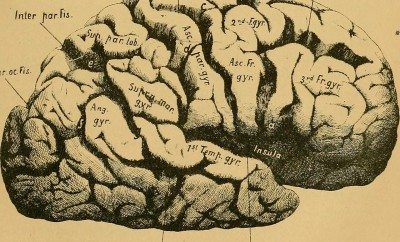 Image courtesy of [Moyan Brenn via Flickr]
Image courtesy of [Moyan Brenn via Flickr]
Health & Science
Can Meditation Change Your Brain?
If you had the chance to change your brain, would you? If you said yes, meditation might be the answer. Meditation involves sustained thinking aimed to relax or achieve religious or spiritual purposes. It’s a simple and ancient practice; paintings found in the Indus Valley from 5,000-3,500 BCE depict people reposing in meditative postures. Throughout its long history, meditation has been lauded for virtues like improved moods and decreased anxiety. But how does meditation produce these benefits aside from just making people more relaxed?
How can you change your brain?
It turns out that meditation actually changes your brain. This might sound a little strange at first, but many things you do can change your brain thanks to a concept called neuroplasticity. Neuroplasticity refers to the brain’s ability to change through experiences or repeated practice. When exposed to a stimuli, the brain can actually create new neurons and form new neural connections that change its structure. When you learn to play new instruments or memorize complicated dance moves, you’re restructuring your brain’s neural pathways.
Think of it this way: when you lift weights repeatedly, your muscles probably get bigger or more toned. They change. Meditation exercises the brain, and like lifting weights, it can produce desired changes.
Funding for research on alternative medicine and meditation surged in the past several years. With healthier budgets and burgeoning new technologies, researchers discovered new scientific connections between meditation and changes in the brain. Below are some summaries of their findings.
Meditation Changes Gray Matter
Massachusetts General Hospital documented that meditation causes changes in the brain’s gray matter. Researchers there measured differences in gray matter concentration in subjects’ brains before and after an eight-week Mindfulness-Based Stress Reduction (MBSR) Program using magnetic resonance (MR) images. After meditation, subjects displayed more concentration in the gray matter of different brain regions, including the left hippocampus. They also took before and after images of a control group that practiced no meditation and saw zero notable changes.
Time out. I have gray stuff in my brain?
Yup. Gray matter tissue surrounds the cerebrum. It’s also called the cerebral cortex, but was dubbed gray matter because of its dull tone. This is the part of your brain that wrinkles. The cerebral cortex is responsible for many functions including motor movements, sensory processing, language, and cognitive skills.
After meditation, gray matter in the subjects’ brains became more concentrated in these regions:
- The left hippocampus: The hippocampus is a vital component of the brain’s limbic system, the portion of the brain that handles emotions and memories. It also connects emotions and memories so you can form associations and experience a wave of happiness when recalling your favorite childhood memories. Meditation induced changes in only the left side of the hippocampus. Unfortunately, the function of the different sides eludes explanation. One study found that synapses in the left and right regions are asymmetrical with distinct structural differences, suggesting that they have separate but interrelated functions.
- The posterior cingulate cortex: Many agree that the posterior cingulate cortex plays a role in cognition, specifically attention direction and rewards systems. Brains at rest, brains planning for the future, and brains reflecting on the past show increased activity in this region. A Duke University study suggests this region might be what keeps you motivated when learning something challenging. Posterior cingulate cortex activity in monkeys increased when they made errors in a test and needed to learn something new to improve their performance.
- The temporo-parietal junction: The temporo-parietal junction is often associated with empathy. Studies have found activity in this region increases when subjects read stories about people who were accidentally or intentionally harmed.
- The cerebellum: A large brain region called the cerebellum helps you make coordinated movements and communicates with several other structures in the brain. It’s how you can run, walk, eat, and throw a football without thinking of all of the tiny movements you need to perform to accomplish these seemingly simple tasks.
- The amygdala: The researchers also found decreased gray matter density in the amygdala, a region associated with anxiety and stress.
Meditation Reduces Anxiety
The Wake Forest Baptist Medical Center found that meditation reduces subjects’ anxiety ratings by as much as 39 percent. They studied 15 volunteers with normal stress levels, no diagnosed issues, and no meditation experience. The volunteers learned the proper way to practice mindful meditation and took just four 20-minute classes. Scientists noted changes in the brain areas associated with worrying and emotions during and after the meditation.
Scientists noticed increased activity in the areas noted below. While each perform many complex functions, their associations with emotions, guilt, and conflict control contributed to the subjects’ decreased anxiety ratings.
- The ventromedial prefrontal cortex: The ventromedial prefrontal cortex has been connected with decisionmaking and cognitive control as well as complex social interactions like emotional processing and guilt. Most people would be incensed after witnessing a poisoning attempt. Studies have shown that people with damage to their ventromedial prefrontal cortexes don’t find a moral problem as long as the potential poisoner failed to kill the victim. They view the transaction only as deep as the outcome.
- The anterior cingulate: The anterior cingulate activates during conflict. Recent research has found that it’s also active when we find something humorous. Researchers believe this points to its role in coping with situations. Your brain might not see the difference between trying to understand the punchline of a joke and trying to detect why your spouse could be mad at you.
Meditators Have Different Brains
Other studies from Massachusetts General Hospital reported that meditators’ brains differ structurally from non-meditators’ brains. Meditators have thicker regions for sensory processing and attention than non-meditators. Older people showed even more pronounced differences, suggesting that meditation might be able to reduce thinning of certain structures as the brain ages.
The study showed that you can change the structure of your brain, making certain areas thicker and stronger with constant practice. Why is that so special? Well, Albert Einstein might have owed some of his genius to thicker connective structures in his brain.
These regions indicated below were thicker in the meditators studied:
- The prefrontal cortex: The prefrontal cortex engages when you’re involved in complex and abstract thought, emotions, planning, and introspection. It’s basically your decision center, taking information provided by your senses and deciding what to do with it. It might also play a role in creativity. Scientists studied brain images of jazz artists to see what the brain does during the spontaneous performance of music. During improvisation, the scans revealed a flurry of activity in the medial prefrontal cortex. To make things more interesting, they noticed activity in the dorsol lateral prefrontal cortex decreased; this area of the brain manages inhibitions and detailed planning.
- The insula: The insula is a mysterious prune-sized brain tissue thought to be important in integrating thoughts, senses, and emotions. For example, when you smell something you find repulsive, it’s probably the insula that relays the distaste to your brain in reaction to the odor. It also lights up during arousal–when people feel pain, crave drugs, listen to jokes, and even make financial decisions.
What else can meditation do?
Other studies have suggested fascinating effects of meditation without pinning down the actual brain structures responsible. According to these compelling findings, meditation might…
Allow You to Expand Limited Brain Resources
Our brains have limited capacity for processing synchronous stimuli. For example, when presented with two visual targets in close proximity, you can’t detect the second. This is called attentional blink. See for yourself:
But some studies suggest meditation reduces attentional blink. Attentional blink happens because the two targets compete for your limited brain resources. Meditators allocate their resources across the targets more effectively and therefore can detect both.
Make Us Masters of Pain
Meditation might influence reaction to pain. Researchers pitted 12 thirty-year meditation veterans against 12 normal, yet meditation-less control subjects. The meditation veterans showed a 40-50 percent lower response in their brains when exposed to pain than those in the control group. After the 12 members of the control group practiced meditation for five months, their brains’ responses to pain decreased by 40-50 percent, as well.
Mind Over Matter
Mind over matter. Believe and achieve. Mantras like this stare us down from classroom posters and self help tomes. While the statements are inspiring, few people take them literally. But evidence that you can change your brain through meditation gives these words new life. From changing your gray matter concentration to thickening certain regions of your brain, the emerging studies on meditation are compelling–even for the most skeptical of potential practitioners.
You have the power to change your brain. How’s that for an empowering meditation mantra?
Resources
Primary
Townsend Letter: Transcendental Meditation Reduces the Brain’s Reaction to Pain
NIH: Buddha’s Brain: Neuroplasticity and Meditation
PLos Biology: Mental Training Affects Distribution of Limited Brain Resources
NIH: Mindfulness Practice Leads to Increases in Regional Brain Gray Matter Density
Additional
Psych Central: Meditation That Eases Anxiety? Brain Scans Show Us How
Harvard: Eight Weeks to a Better Brain
Reference and User Services Quarterly: Meditation and Health: an Annotated Bibliography
Brain Facts: Mapping the Brain
Education Portal: Hippocampus: Definition, Function & Location
Science Daily: How is Our Left Brain Different From Our Right?
Brain Facts: Neuroeconomics: Money and the Brain
Brain Facts: No Laughing (Gray) Matter: Laughter, the Brain, and Evolution
Brain Facts: Unlocking Creativity in the Brain
Psychology Today: An Overview of Meditation: Its Origins and Traditions








Comments